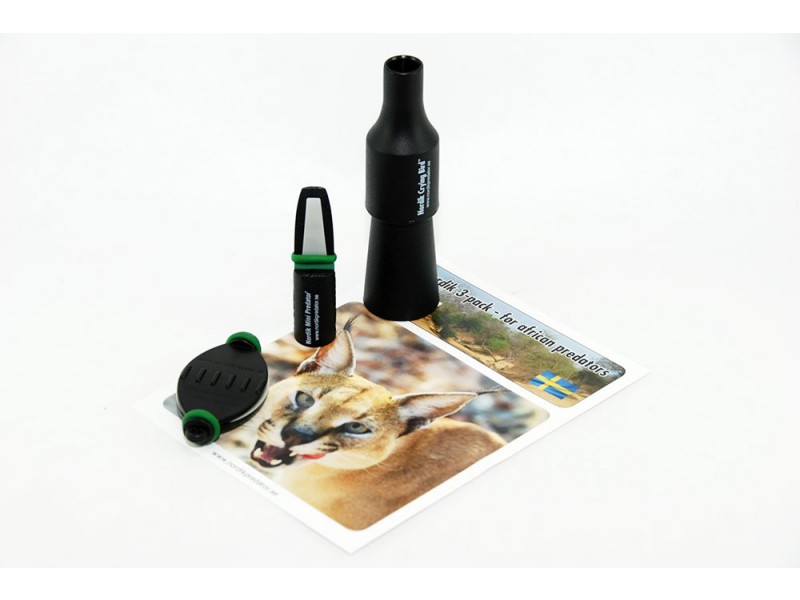Set of 3 Whistles for Attracting Foxes and Predators NORDIK 3-pack PREDATOR

NORDIK MINI PREDATOR is specifically developed to meet the demands for calling predators in Nordic conditions. The call is easy to use, and its mouthpiece is frost-resistant. The call can produce many different sounds. This call has a smaller soundboard and a thinner membrane than its older brother, Nordik Predator.
The rodent squeaks
To imitate the squeaking of a mouse or a mole, place your O-ring, teeth, or lips on the extreme outer edge of the membrane and blow with short bursts into the call.
Calls for the help of a rabbit and hare
These calls are easy to perform by placing your O-ring, teeth, or lips in the middle of the mouthpiece and blowing into the call. The more on the membrane, the coarser the sound. Alternate long and short sounds for 15-25 seconds and repeat every 3-4 minutes. Open and close your hand in front of the call opening while blowing for a more lively sound.
MORE ABOUT THE NORDIK MINI PREDATOR WHISTLE (CLICK)
NORDIK CRYING BIRD is specifically developed to imitate distressed bird sounds. These sounds are very effective for calling foxes and other predators.
To imitate a distressed jackdaw, blow into the call with short and intense bursts of air or strong trrr, trrr, trrr.
To hear small birds, blow carefully and let the air flow in and out of the call.
If you blow a short, steady stream of air through the call, you will produce a very realistic sound of a rabbit in distress. Call for 15-30 seconds and sit quietly for 1-2 minutes, then repeat for 15-25 minutes / standing.
You can watch a video of a woodpecker in distress caught in a bird ringing net at www.nordikpredator.se. You can use this as a guideline when practicing with the call.
MORE ABOUT THE NORDIK CRYING BIRD WHISTLE (CLICK)
NORDIK PLAIN PAIN
Due to the unique design of the membrane, the whistle for calling foxes emits a sound that is similar to the sound of pain and agony of an animal.
With a bite on different soundboards and varying blowing through both sides of the whistle, it produces virtually all commonly known distress sounds necessary for effectively calling predators (foxes).
The whistle is wider on one side and thinner on the other, so you will achieve different tones from it.
In principle, you can obtain at least three different tones from each side of the whistle.
If you bite the whistle in the middle, you will produce a general sound of an animal in agony from both sides.
With each bite closer to the edge of the whistle, you can adjust the tone to the desired sound.
We suggest calling in the following time intervals:
- whistle long and short sounds for 15-25 seconds
- repeat calling every 3-4 minutes
- In very open terrain, we recommend calling again after 2 minutes.
- Remember: practice makes perfect!


















